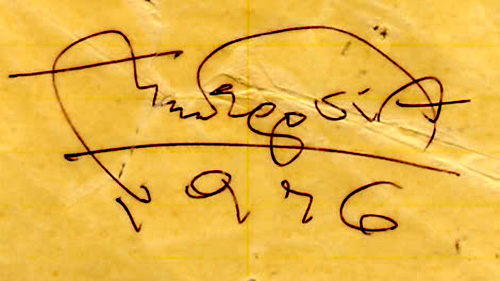
Lawrence Welk’s hour-long world as presented on The Lawrence Welk show—with its smiling singers, brightly colored sets, color-coordinated male and female outfits, and flawless band performances—were stress-free and wholly detached from the outside world.
His was a sealed-off, accident-free utopia soundtracked by an endless supply of what the maestro called “champagne music”. Once a week, Welk presented viewers with one of the most otherworldly—and most underappreciated—psychedelic chiffon musical paradises ever seen on television.
This according to “The maestro from another planet: In praise of Lawrence Welk’s otherwordly chiffon paradise” by Ken Parille (The believer XII/6 [July-August 2009; online only]).
Today is Welk’s 110th birthday! Below, the maestro celebrates on the dance floor.











